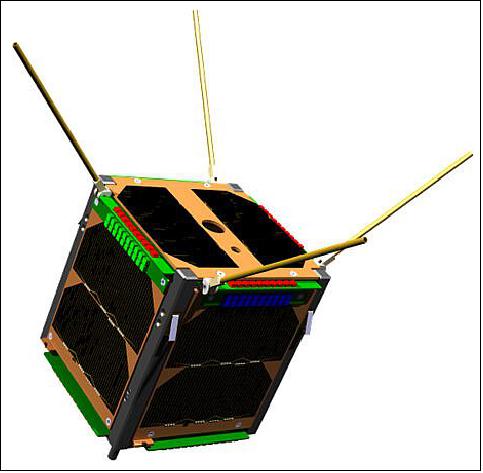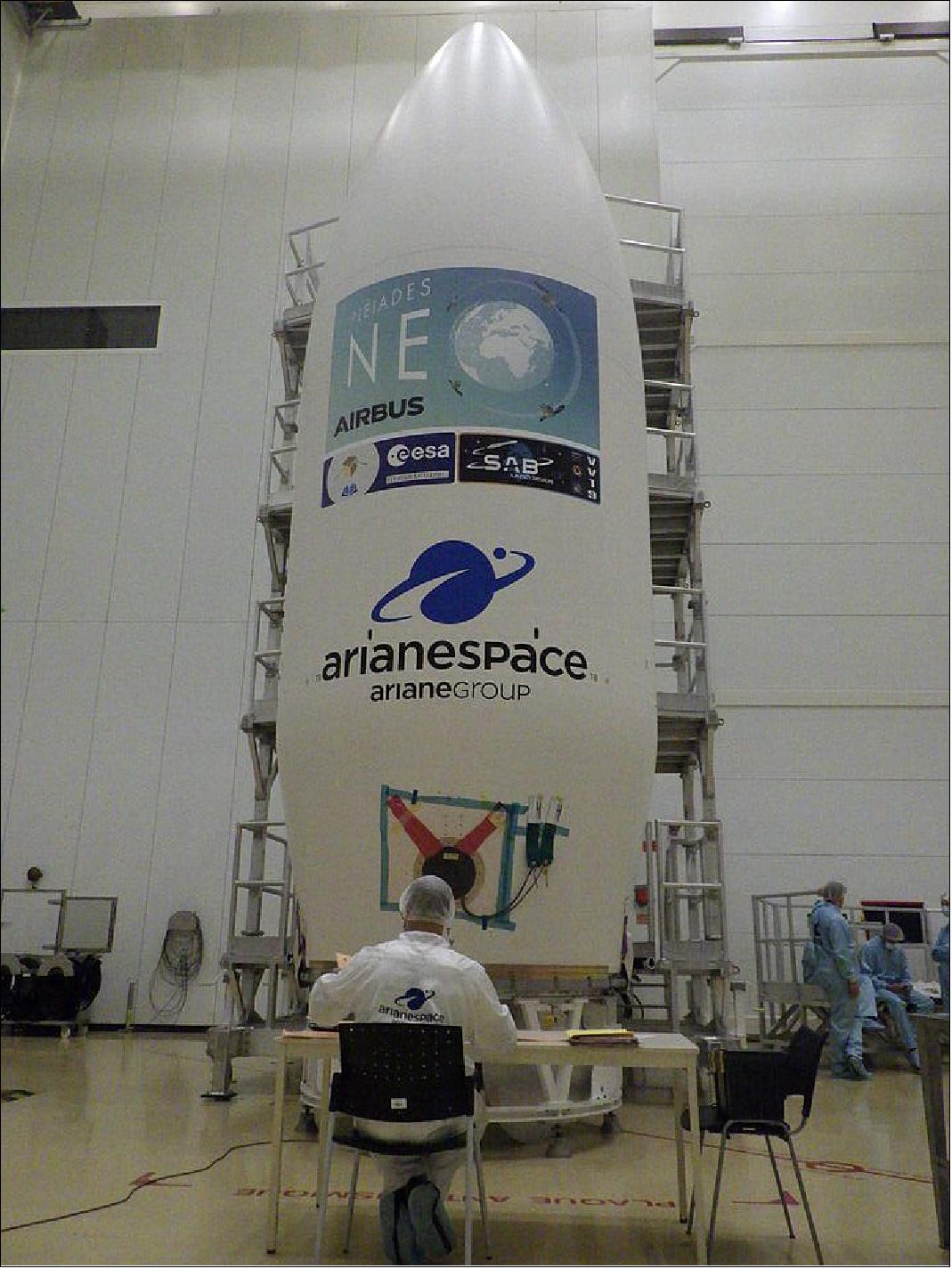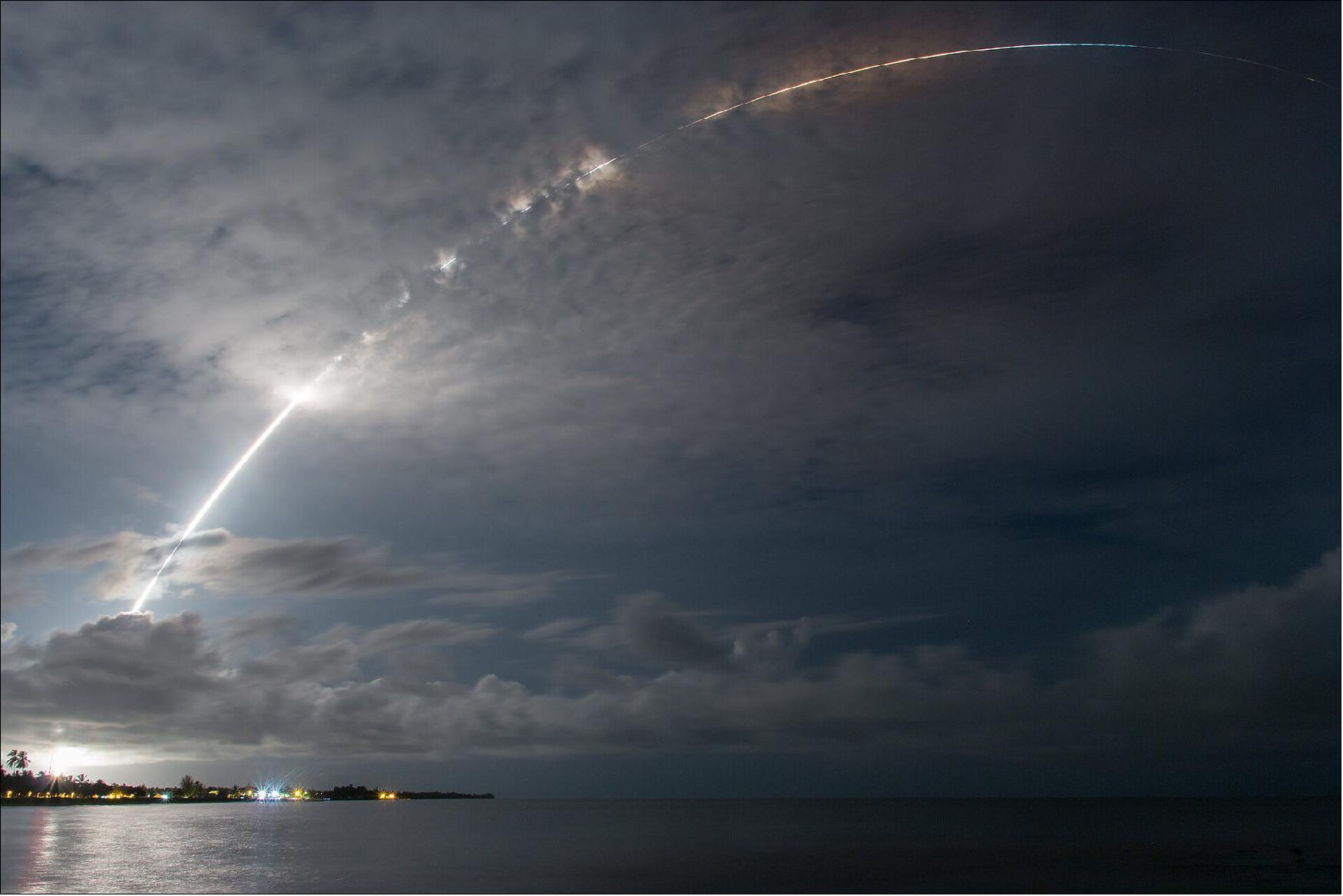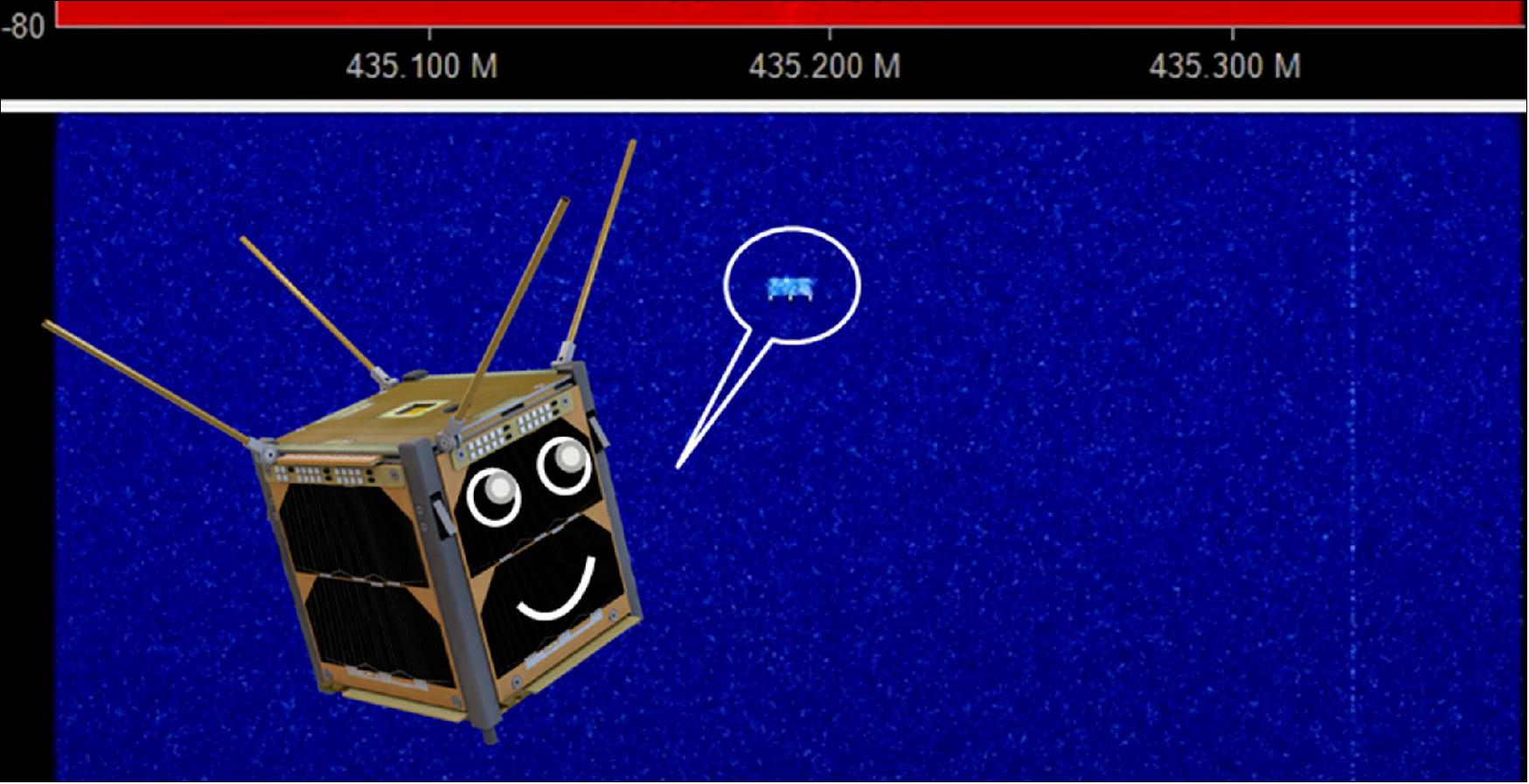LEDSat (Light-Emitting Diode Satellite)
EO
ESA
Operational (nominal)
Communications
Quick facts
Overview
| Mission type | EO |
| Agency | ESA |
| Mission status | Operational (nominal) |
| Launch date | 17 Aug 2021 |
| Instrument type | Communications |
| CEOS EO Handbook | See LEDSat (Light-Emitting Diode Satellite) summary |
LEDSat (Light-Emitting Diode Satellite)
Launch Mission Status Some parameters of the LEDSat mission References
The LEDSat team, participating in the second round of ESA's Fly Your Satellite! program, has completed their crucial structural qualification and thermal-vacuum tests, demonstrating their CubeSat's readiness to continue with its mission to space! 1)
The LEDSat CubeSat is a 1U CubeSat developed by Sapienza University in Rome, Italy to offer space Aerospace engineering students the opportunity to participate in a satellite mission from initial design of the CubeSat to the disposal after the mission has ended.
LEDSat is fitted with LED boards on the faces of the satellite to allow ground based optical telescopes to observe and track the satellite in orbit. Additionally, the team will also use the LEDs to get information on the attitude of the satellite and to test the on-board LED-based technology for an encoded light communication strategy.

Every team on the Fly Your Satellite! program has to put their CubeSat through a series of environmental tests to verify their CubeSat will withstand the vibrations experienced during launch and the extreme temperature and pressures of being in Low Earth Orbit.
The ESA Education Office provides support for teams to complete these intensive tests, which ordinarily are carried out at the Office's CubeSat Support Facility (CSF) at ESEC-Galaxia in Belgium, with the full support of ESA operators. Unfortunately, the events of 2020 did not allow the LEDSat team and their satellite to travel to Belgium, and this exceptional year led to the execution of testing at University facilities in Rome, with remote support provided by ESA technical experts before and after the tests and live connections to the ESA Education office during the tests themselves.
At the end of November 2020, the LEDSat team started the environmental test of their Proto Flight Model (PFM) which begun with vibration tests, at the Vibration Experimental Laboratory at Sapienza University. The PFM was placed on a shaker armature and shaken on all three axes to qualify it for the launch on-board a rocket – a launch that is planned for 2021. The team worked long hours to analyze the results and move swiftly towards the next steps in the environmental test campaign (ETC).
A FYS (Fly Your Satellite) project member travelled safely to Sapienza University to inspect and perform a fit check of the LEDSat CubeSat with a test deployer. With everything looking good, the team proceeded.
A "bake-out" was then performed, where the CubeSat is placed in a vacuum chamber for multiple days at temperatures of 40ºC to ensure outgassing of any volatile compounds.
With the bake-out completed, the CubeSat was placed in the thermal vacuum chamber. Inside the chamber, the satellite experienced several thermal cycles both hot and cold, simulating the conditions that it will meet in orbit. During the time in the thermal vacuum chamber, the team carried out several functional tests to ensure their satellite was working as expected. After 5 days in the chamber, the team performed a final functional test and ended the test just in time for Christmas.

The LEDSat team analyzed the data from the TVAC test and with a Post Test Review of the results with the Fly Your Satellite! project team and ESA experts, the thermal vacuum (TVAC) test was deemed successful.
A member of the LEDSat team expressed his thoughts on the ETC experience: "For the TVAC campaign I carried out a thermal analysis on how the system behaves during the tests and helped in writing the report document regarding it. Although I participated remotely, following the steps from home was helpful in order to define how a test campaign is carried out and before that, the preparations it can undergo. In addition, it was satisfying viewing the results confirm the analysis carried out before."
The team is now in the final review prior to launch – the FAR (Flight Acceptance Review). In this stage, the team has delivered the final documentation for their mission and a panel of ESA experts will review their mission in great detail and determine if it is ready for launch.
If the mission is ready, the team gets a "Ticket to Orbit" allowing them to move to the next phase of the program, Launch Your Satellite!

Development Status
• August 6, 2021: The 1U CubeSat, LEDSat, from the Fly Your Satellite! program is now encapsulated with the rest of the passengers ready for the Vega Launch! 2)
- The fairing was closed around the main passenger and the launch adapter on which the deployer with LEDSat is installed.
- After encapsulation, the PAC (Payload Assembly Composite) will go through a further checks and finally be transported to the launch pad where the VEGA rocket is waiting.

• July 28, 2021: Members of the student team LEDSAT have travelled with their satellite and its deployer to Europe's spaceport, the Centre Spatial Guyanais in French Guiana. This equipment will now be integrated onto a Vega rocket ready for launch later this summer! 3)
- The students were accompanied by a member of ESA's Fly Your Satellite! team. This programme gives young scientists and engineers the opportunity to design and build a fully-functional CubeSat satellite to be launched into orbit. The students behind LEDSat are from Sapenzia University in Rome. LEDSat Student team leader Paolo Marzioli shared some of his experience being at the Centre Spatial Guyanais: "Being here is an incredible experience and we are learning a lot from every little step we attend."
- The team undertook several important final procedures before their precious hardware could be loaded onto the rocket. In particular, they inspected their satellite and its deployer to ensure that no damage was suffered during shipping from Brno, Czech Republic. A thorough review of the transport logs, combined with an Integration Readiness Review, took place, and it appears that LEDSat is in excellent condition. The deployer's electrical connections to the launcher's onboard electrics were also thoroughly checked, and a final test was made of the door opening mechanism.
- Next, two CubeSats deployers, one of which houses LEDSat, were installed onto each side of the launch adapter. They point in opposite directions so that the CubeSats are deployed into orbit away from each other to reduce the risk of collisions.
- The main passenger of the VEGA, an Earth observation satellite called Pléiades Néo 4, will be integrated in a couple of days on top of the launch adapter. Afterwards the fairing of the VEGA rocket will encapsulate the main passenger and its CubeSats companions – including LEDSat. The whole assembly with launch adapter and fairing will then be moved to the launch pad and installed on top of the VEGA rocket. This will happen a few days before launch, giving time for a dress rehearsal before launch.

Launch
The LEDSat passenger payload was launched on 17 August 2021 (at 01:47 UTC) as a technology demonstration mission on the Vega SSMS piggyback mission VV19 of Arianespace from Kourou. The primary mission on this flight was Pleiades Neo-4 of CNES/Airbus. 4) 5)
Orbit of secondary payloads: Sun-sunchronous orbit with an altitude of 551 km.
Passenger Payloads
The 19th mission of Europe's Vega light launcher also injected four CubeSats on a sun-synchronous orbit, three for the European Space Agency (ESA) and one for the French start-up Unseenlabs. The three ESA payloads were under contract with SAB Launch Services. In order to meet their clients' needs and to ensure them a quicker access to Space, Arianespace and SAB Launch Services set up a collaboration to integrate all four auxiliary passengers in two PSL6U Deployers installed on the Payload Adapter.
• LEDSat, a 1U CubeSat of Sapienza University of Rome, Italy.
• RadCube, a 3U CubeSat from C3S, Hungary, to demonstrate miniaturized instrument technologies that measure in-situ the space radiation and magnetic field environment in Low Earth Orbit for space weather monitoring purposes;
• SUNSTORM, a 3U CubeSat from RSL, Finland, with an innovative solar X-ray spectrometer to detect the X-ray pulses produced by coronal mass ejections – massive eruptions of many millions of tons of material from the Sun's surface.
• BRO-4, the fourth 6U CubeSat from Unseenlabs, France, of the constellation BRO (Breizh Reconnaissance Orbiter), a spectrum monitoring and electromagnetic intelligence service for maritime surveillance.

Mission Status
• August 26, 2021: After the successful launch of the Vega VV19 mission on 17 August at 01:47 UTC, radio amateurs from all over the world listened in for the first signals from LEDSAT, the 1U CubeSat from Sapienza University, Rome, participating in the Fly Your Satellite! program. 6)
- The first beacons were transmitted around 04:20 UTC after deployment of LEDSAT's antennas and the first recordings of LEDSAT came in at 05:56 UTC on the morning of the launch from the island nation of Mauritius, off the east coast of Madagascar.
- A big "Thank you" to all who listened for LEDSAT and to all those who sent in their recordings of LEDSAT's first beacons from orbit, from both the Fly Your Satellite! team and the LEDSAT team. LEDSAT student team leader, Paolo Marzioli, had some words to share about the competition:
- "We were all extremely happy to see how much our small project has resonated through the radio-amateur community, their incredibly helpful support to small satellite missions is not new to us but it's always incredible to see people literally in all continents talking about your satellite. We congratulate the winners and all the participants in the competition: Thanks for your interest and your support! We're looking forward to the future months and years to come."

- From all the recordings of LEDSAT sent in, the first confirmed entry from each continent were identified. Here are the winners of the radio amateur competition along with their call sign:
a) Asia: Edward Chuang - BX1AD
b) Africa: Jean Marc Momple - LG89UX - "Congratulation to the LEDSAT team and long life to the satellite, wish you all success with the mission."
c) Europe: Dmitry Pashkov - R4UAB
d) North America: Scott Chapman – K4KDR - "Congratulations on getting LEDSAT into orbit - best of luck with the mission!"
e) South America: Roland Zurmely - PY4ZBZ
- The winners will receive a certificate along with a small prize. The rest of the entrants will also receive a certificate as a token for their help and enthusiasm for the competition.
- The Fly Your Satellite! team hopes to hear from you again on future missions!
Some Parameters of the LEDSat Mission
• High-powered LEDs external arrays in three colors (Red, Green and Blue, with same LED color on opposite faces of the spacecraft)
• LEDSAT has a mass if 1.325 kg and a power consumption of 5.26 W in Sunlight and 28.32 W in Eclipse.
• Solar Panels: Five COTS high efficiency triple-junction solar panels, mounted on five of the CubeSat faces. All the panels are provided, on the rear side, with magneto-torquers for attitude control.
• Mission lifetime: 1.5 years
• Ground station: Optical Ground Stations (Rome and Matera , Italy; Malindi, Kenya; Bern, Switzerland; Ann Arbor, Michigan, USA and Cerro Tololo, Chile). — RF Network (Rome, Italy; Nairobi, Kenya and Ann Arbor, Michigan, USA) Laser Ranging Network (Matera, Italy and Bern, Switzerland)
• https://www.s5lab.space/index.php/ledsat-home/
References
1) ""Shake and bake" has concluded: LEDSAT team has completed environmental tests," ESA / Education / CubeSats - Fly Your Satellite!, 04 February 2021, URL: https://www.esa.int/Education/
CubeSats_-_Fly_Your_Satellite/Shake_and_bake_has_
concluded_LEDSAT_team_has_completed_environmental_tests
2) "The 1U CubeSat, LEDSAT, from the Fly Your Satellite! programme is now encapsulated," ESA, 6 August 2021, URL: https://www.esa.int/Education/CubeSats_-_Fly_Your_Satellite/
The_1U_CubeSat_LEDSAT_from_the_Fly_Your_Satellite!_programme_is_now_encapsulated
3) "LEDSAT at Europe's spaceport for integration onto a Vega rocket," ESA, 28 July 2021, URL: https://www.esa.int/Education/CubeSats_-_Fly_Your_Satellite/
LEDSAT_at_Europe_s_spaceport_for_integration_onto_a_Vega_rocket
4) "19th Vega mission demonstrates Arianespace's ability to deliver for the most innovative projects for the benefits of its clients," Arianespace Press Release, 17 August 2021, URL: https://www.arianespace.com/press-release/vv19-vega-launch-success/
5) "Vega launches Pléiades Neo and CubeSats," ESA Enabling & Support, 17 August 2021, URL: https://www.esa.int/Enabling_Support/
Space_Transportation/Vega/Vega_launches_Pleiades_Neo_and_CubeSats
6) "Winners of the LEDSAT radio amateur competition," ESA Education, 26 August 2021, URL: https://www.esa.int/Education/CubeSats_-_Fly_Your_Satellite
/Winners_of_the_LEDSAT_radio_amateur_competition
The information compiled and edited in this article was provided by Herbert J. Kramer from his documentation of: "Observation of the Earth and Its Environment: Survey of Missions and Sensors" (Springer Verlag) as well as many other sources after the publication of the 4th edition in 2002. - Comments and corrections to this article are always welcome for further updates (eoportal@symbios.space).
Launch Mission Status Some parameters of the LEDSat mission References Back to top